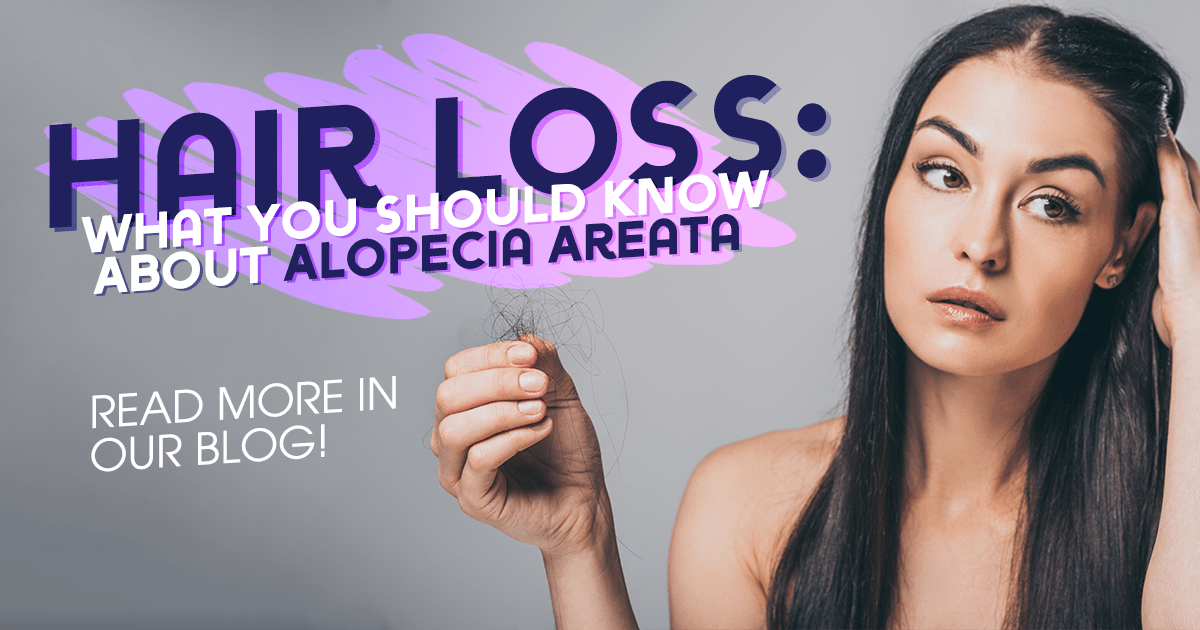Hair loss and hair shedding are two different things. 50 to 100 hairs are shed on a regular daily basis. Hair loss means something has stopped the hair from growing. There are a lot of different factors that can cause hair loss. Alopecia areata is one of the conditions that cause hair loss. Although not contagious, and does not pose a severe health risk, alopecia can be challenging, so involving your dermatologist can help make the management more effortless.
Defining Alopecia
Alopecia areata is an autoimmune disease that causes the body to attack its hair follicles, causing hair loss in patches anywhere on the body. The hair follicles are still alive, and the hair can regrow at any time. Hair loss is unpredictable and may regrow without treatment. Most people develop alopecia areata in their childhood or teenage years but can develop it at any age. All races and genders can develop it as well.
The cause remains unknown, and scientists aren’t sure exactly what triggers the immune system to attack the healthy hair follicles. They believe that multiple factors working together, such as genetic and environmental, are needed to set it off.
Diagnosis and Treatment
Alopecia is diagnosed by a visual exam of the affected areas. Your doctor may gently pull at the hair in the area to see if it easily comes out or may need to do a biopsy to confirm.
Treatments for alopecia depend on severity and type. It is important to remember that no medicine can stop new hair loss from occurring. Treatments are aimed at slowing down future hair loss and helping hair regrow more quickly. Below are the different treatment types listed with some examples:
- Topical– Minoxidil (Rogaine), Anthralin (Dritho-Scalp), and corticosteroid creams such as clobetasol (Impoyz).
- Injection– Steroid injections where tiny needles inject the steroid into the bare skin of the affected areas.
- Oral– Cortisone tablets, and oral immunosuppressants.
- Light Therapy– Type of radiation treatment that uses a combination of an oral medication called psoralens and UV light.
Several new potential treatments for alopecia areata are on the horizon through clinical trials. Through clinical trials, safe and effective drugs, therapies, and ultimately, a cure for alopecia areata will be discovered. When you participate in a clinical trial, you play an essential role in the fight to treat and cure alopecia areata.
Living with Alopecia
Not everyone will opt to go with traditional medication therapies. It would be best if you educated yourself on this condition so you can feel more in control. Please work with your doctor to find the right approach for you, whether it is medication, or choosing an alopecia-friendly product to help cover the patches. Apply sunscreen to any are areas and wearing sunglasses can help if you are missing eyebrows and lashes. If the feelings of having alopecia areata are overwhelming, seek help from a professional to help you manage. Your doctor can provide you with some helpful resources.
To learn more about our currently enrolling alopecia areata clinical research study at Texas Dermatology, call (210) 728-3919, or click here.
References:
https://www.aad.org/public/diseases/hair-loss/insider/shedding
https://www.healthline.com/health/alopecia-areata#types
https://www.naaf.org/alopecia-areata
https://magazine.medlineplus.gov/article/5-tips-for-living-with-alopecia-areata










